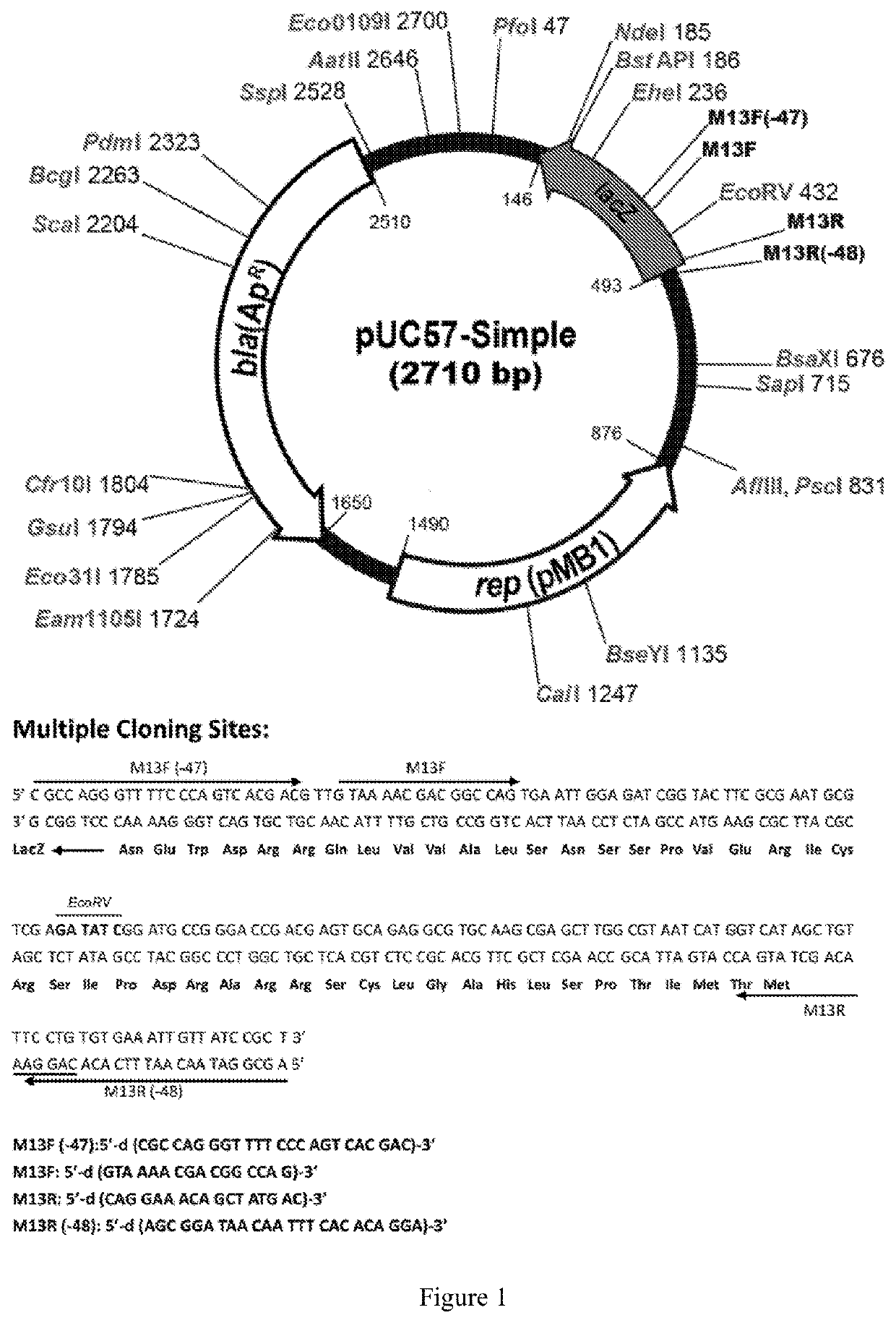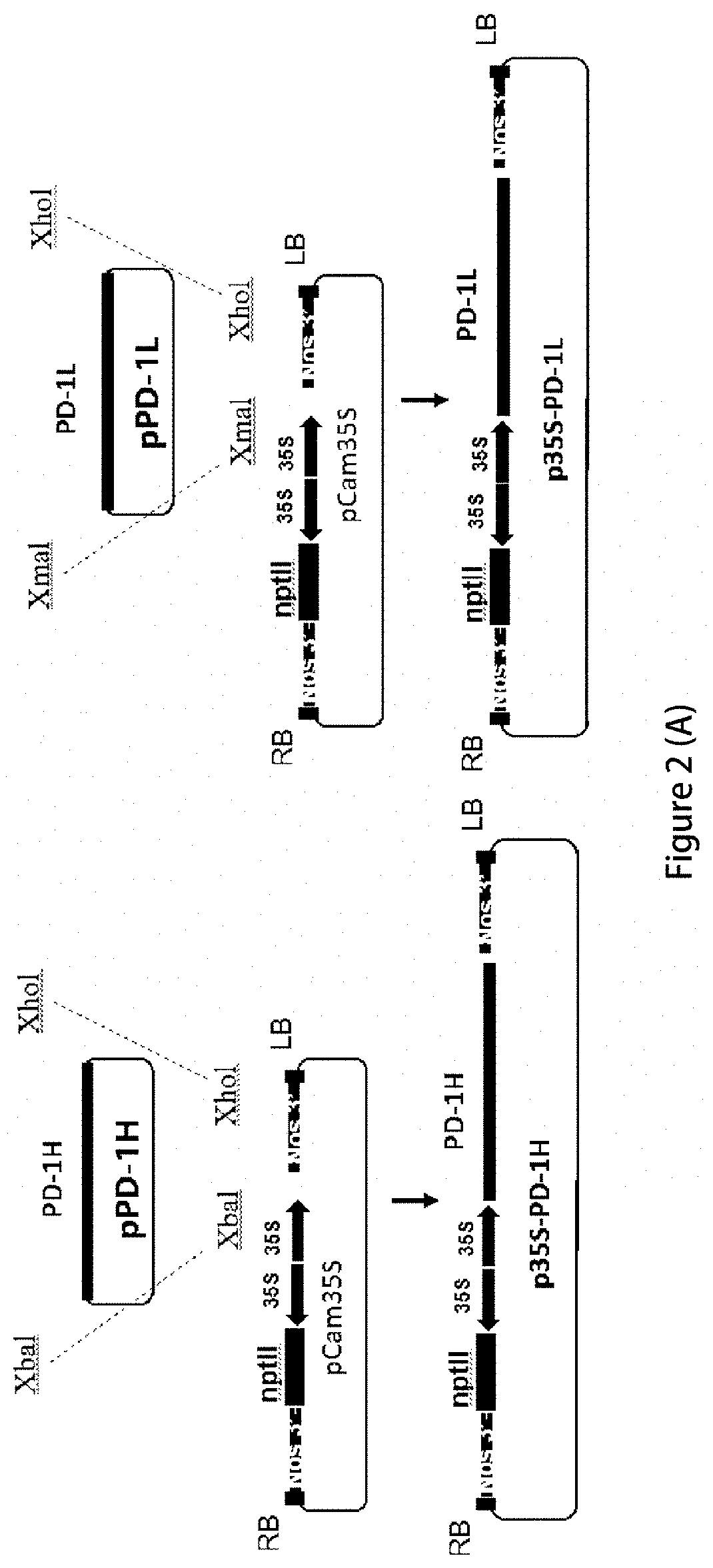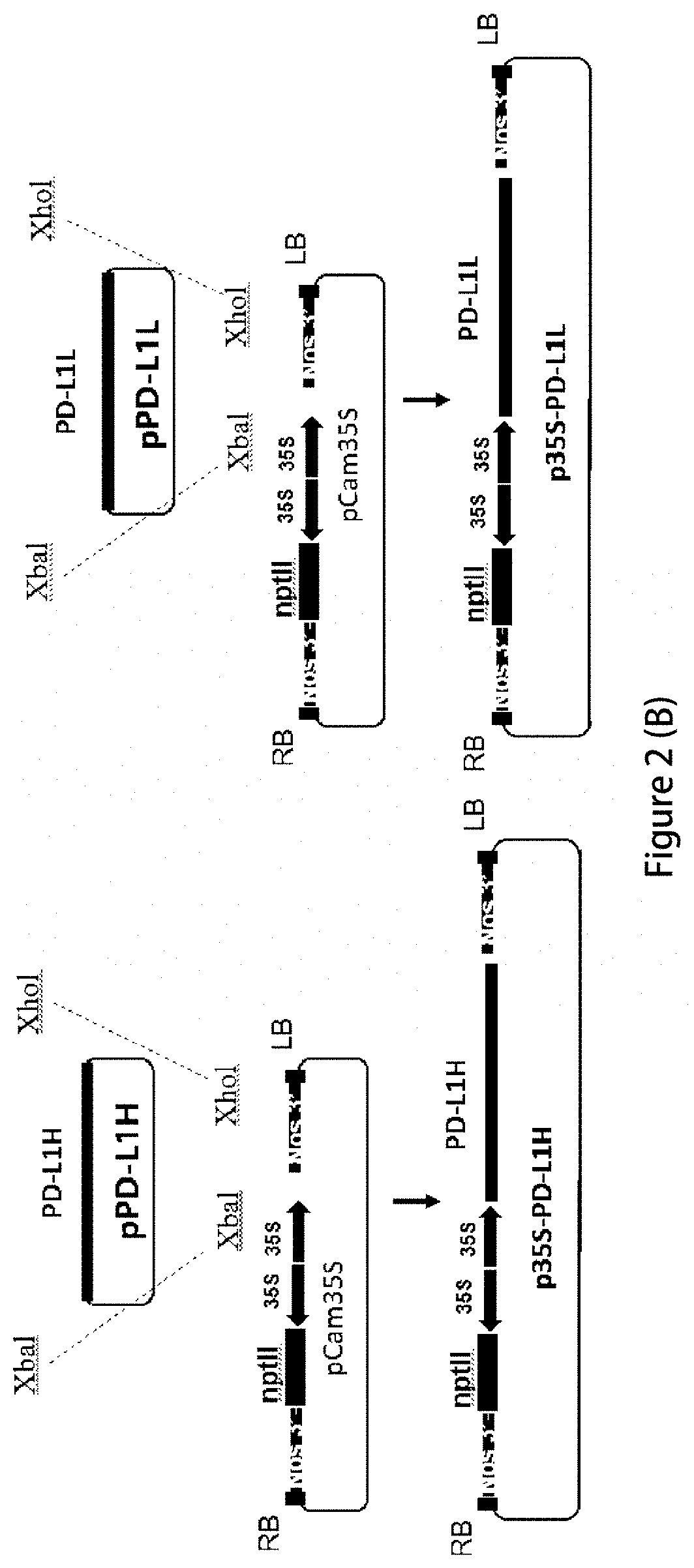Application of plant as host in expressing pd-1 antibody and/or pd-l1 antibody
a technology of plant host and pd-1 antibody, applied in the field of biotechnology, can solve the problems of systemic toxicity and drug resistance, inability to block the spread of cancer cells, weakening of the patient's body, etc., and achieves the effects of short production period, simple purification, and high efficiency
- Summary
- Abstract
- Description
- Claims
- Application Information
AI Technical Summary
Benefits of technology
Problems solved by technology
Method used
Image
Examples
example 1
ion of Plant Transient Expression Vector
[0064]In order to provide high-efficiency expression of exogenous proteins in plants, the codons of the human PD-1 heavy chain (GenBank Accession number: 5DK3_B) and light chain, (GenBank Accession number: 5DK3_A), PD-L1 heavy strand (GenBank Accession No.: AAO 17823.1) and light chain (GenBank Accession number: 4DKE_L) are optimized into plant-preferred codons using the protein sequence reverse translation software (https: / / www.idtdna.com / CodonOpt) and synthesized by Genescript (Nanjing, China). XbaI restriction site was added at the 5′ end and XhoI site was added at the 3′ end of the optimized PD-1 heavy chain, as well as PD-L1 light chain and heavy chain sequences, respectively. XmaI restriction site was added at the 5′ end and XhoI site was added at the 3′ end of the PD-1 light chain sequence, respectively. The sequences were cloned into pUC57 vector by genecript, to obtain pPD-1H, pPD-1L, pPD-L1H and pPD-L1L cloning vectors, respectively....
example 2
rium-Mediated Vacuum Infiltration
[0066]The prepared agrobacterium containing p35S-PD-1H and agrobacterium containing p35S-PD-1L were mixed in equal amounts to O.D.600 of 0.5; also, the prepared agrobacterium containing p35S-PD-L1H and agrobacterium containing p35S-PD-L1L were mixed in equal amounts to O.D.600 of 0.5. The culture suspension was added into a 2 L beaker and the beaker was placed in a desiccator. The lettuce was inverted (core up) and gently spun in the bacterial suspension, and the desiccator was then sealed. Vacuum was applied using a vacuum pump (Welch Vacuum, Niles, Ill., USA) and the penetrating solution in the leaf tissue was observed. After keeping under the pressure for 30˜60 s, the pressure was released quickly, allowing the penetrating solution to penetrate into the space inside the tissue. This procedure was repeated 2 to 3 times until the significant diffusion of penetrating solution in the lettuce tissue was clearly visible. The lettuce tissue was then gent...
example 3
Protein Extraction and Isolation
[0067]The lettuce sample after agrobacterium vacuum infiltrated was stirred in a stirrer and homogenized at a high speed in the extraction buffer (100 mM KPi, pH 7.8; 5 mM EDTA; 10 mM β-mercaptoethanol) at 1:1 ratio for 1 to 2 minutes. The homogenate was adjusted to pH 8.0, filtered through gauze, and the filtrate was centrifuged at 10,000 g for 15 min at 4° C. to remove cell debris. The supernatant was collected, mixed with ammonium sulfate (50%), and incubated on ice for 60 min with shaking, and then was again separated by a centrifuge (10,000 g) at 4° C. for 15 min. The resulting supernatant was subjected to a second round of ammonium citrate (70%) precipitation, suspended on ice for 60 min with shaking, and again centrifuged at 10,000 g for 15 min at 4° C. Then, the supernatant was discarded, and the precipitated protein from the treated sample was dissolved in 5 mL buffer (20 mM KPi, pH 7.8; 2 mM EDTA; 10 mM β-mercaptoethanol) and stored at 4° C....
PUM
| Property | Measurement | Unit |
|---|---|---|
| Time | aaaaa | aaaaa |
| Time | aaaaa | aaaaa |
| Time | aaaaa | aaaaa |
Abstract
Description
Claims
Application Information
 Login to View More
Login to View More - R&D
- Intellectual Property
- Life Sciences
- Materials
- Tech Scout
- Unparalleled Data Quality
- Higher Quality Content
- 60% Fewer Hallucinations
Browse by: Latest US Patents, China's latest patents, Technical Efficacy Thesaurus, Application Domain, Technology Topic, Popular Technical Reports.
© 2025 PatSnap. All rights reserved.Legal|Privacy policy|Modern Slavery Act Transparency Statement|Sitemap|About US| Contact US: help@patsnap.com



